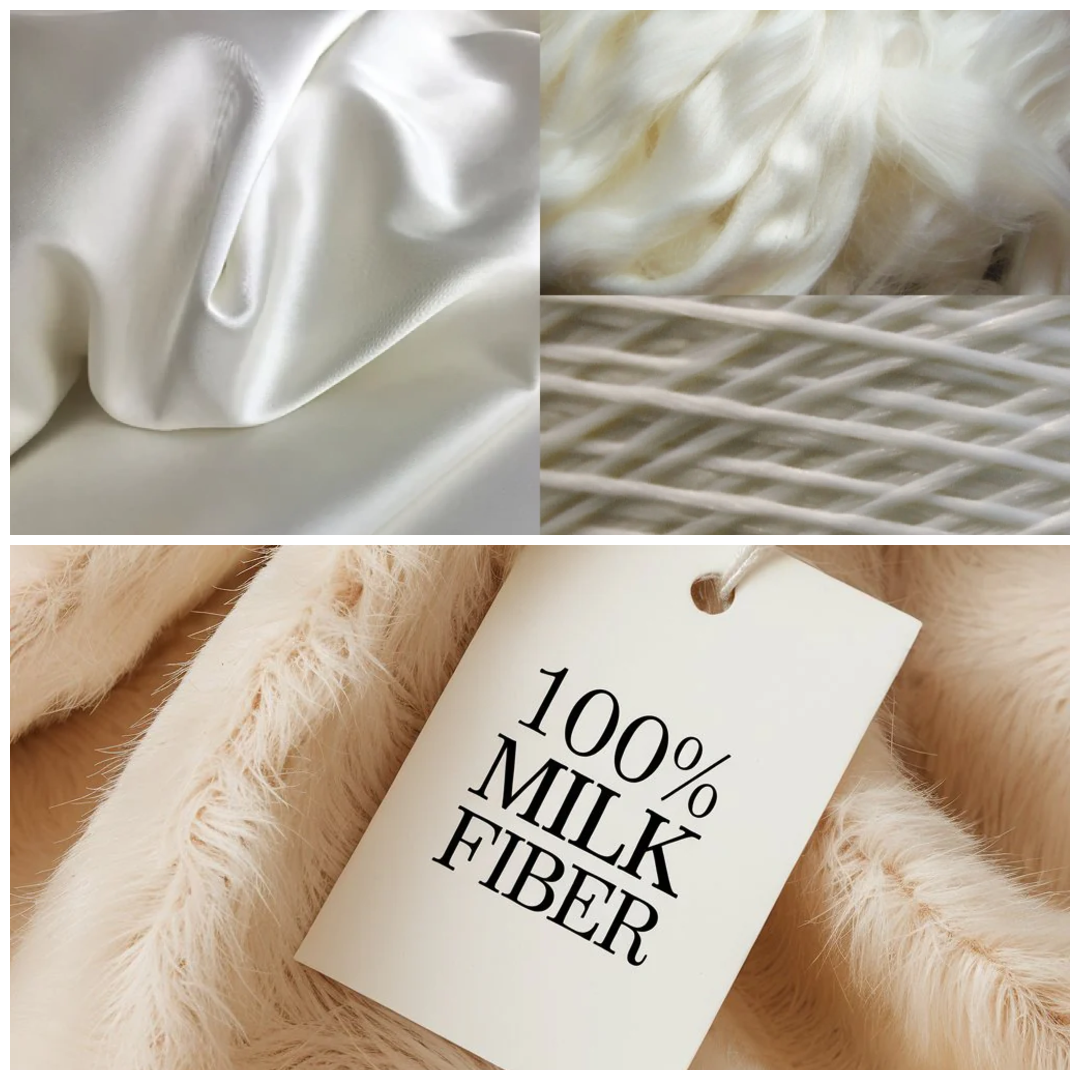Eco-Friendly & Anti-Bacterial: Milk Fabric Makes Grand Comeback After 90 Years
Milk Turns into Luxury Fabric: Fashion World Stunned by Revolutionary Eco-Friendly Innovation: The global fashion industry is witnessing a remarkable breakthrough as a new fabric—made entirely from milk—enters the premium clothing market. Marketed as one of the softest and most skin-friendly materials in the world, this innovative textile is now being used to craft high-end suit pieces and sarees.
Fashion experts are calling it F World’s big achievement, as this extraordinary fabric boasts qualities that outperform even traditional silk. It is three times softer than silk, smooth to wear, anti-odor, and remarkably thermo-regulating—keeping the body warm in winter and cool in the summer. For people with sensitive skin or allergies, milk fabric is proving to be the perfect choice.
Made from Spoiled Milk, Not Cheese
What surprises most consumers is that this luxurious fabric is created not from fresh dairy but from spoiled industrial milk that would otherwise go to waste. The price, however, is nothing short of jaw-dropping—₹15,000 to ₹45,000 per meter—placing it firmly in the luxury category.
A single milk-fabric saree can cost anywhere between ₹3 lakh and ₹5 lakh, making it a premium offering for niche buyers.
The Fascinating Process Behind Milk Fabric
The creation of milk-based clothing involves a unique and eco-friendly process:
- Spoiled milk is first churned.
- Casein protein is extracted from the milk.
- The protein is then boiled in water to create a thick liquid.
- This liquid is fed into a spinning machine, where it transforms into shiny, soft, silk-like fibers.
- These fibers are woven into fabric—without using a single chemical.
The result is a textile that is anti-bacterial, 100% natural, biodegradable, and can decompose in soil within two years. However, the yield is extremely low—only 10 grams of fabric can be produced from one liter of milk, meaning 60–70 liters are required just to make a single T-shirt. This limited productivity is a major reason behind the fabric’s exorbitant price.
Technology With History
While the concept may sound futuristic, making fabric from milk isn’t new. In the 1930s, during World War II, Italy faced a severe shortage of wool. Scientists then developed a milk-derived fabric called “Lanital”, which became extremely popular during Mussolini’s regime. But after the war, with the arrival of affordable wool and synthetic fibers, the demand for milk fabric faded.
The trend resurfaced in 2025, driven by rising environmental consciousness and the global push against plastic-based textiles like polyester.
German Company Qmilk Revives the Innovation
Leading the revival is German company Qmilk, which has adopted and modernized the old Italian technique. Europe wastes around 2 million tons of milk annually, and Qmilk has found a way to transform this waste into high-value, sustainable clothing.
The fabric’s high comfort level has already mesmerized early adopters. Those who have tried milk-based textiles claim that its softness, breathability, and luxurious feel are unmatched.
A Sustainable Luxury Trend for the Future
As consumers increasingly shift away from synthetic fibers and toward eco-friendly materials, milk fabric may become a key player in sustainable high fashion. Its unique texture, environmental benefits, and luxury appeal make it one of the most innovative textile trends of the decade.
ALSO READ: Which Type Of Laughing Buddha Statue Should Be Kept In The House





